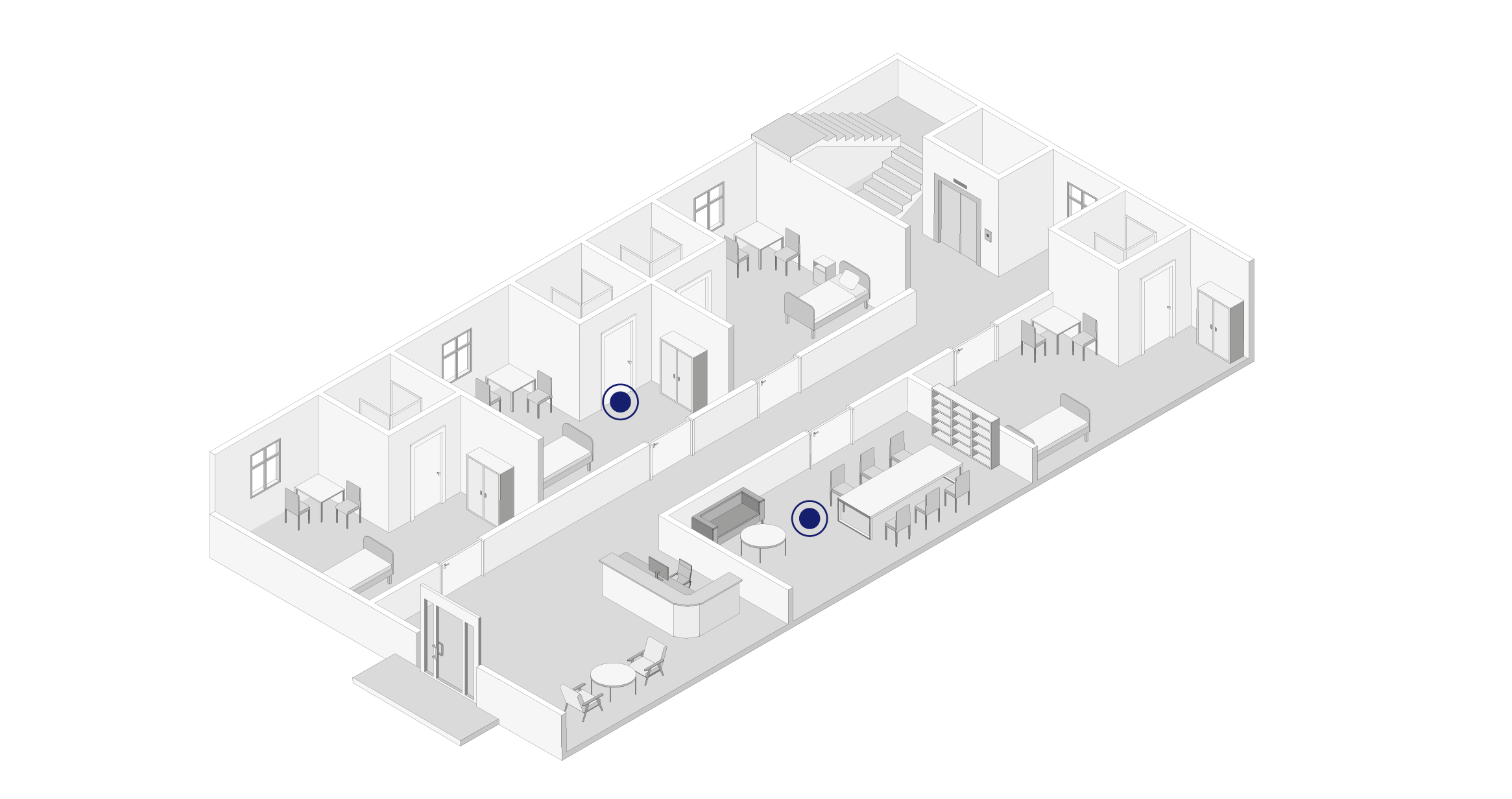


Lighting in nursing homes needs to consider age-specific deterioration in visual performance. Higher illuminance levels and eye-friendly LEDs are just as crucial for well-being as biologically effective light. By supporting the natural day/night rhythm, it has an activating effect during the day, improves sleep at night, and thus recovery.
Different standard requirements apply to the lighting of residents' rooms where, for example, people read, than in communal recreation rooms. In care homes, orientation lighting in rooms and corridors is essential to enable people to navigate safely around the clock.

As we age, visual performance decreases, accompanied by strongly reduced colour and depth perception as well as a deteriorated adaptation of the eyes. The spectral lens permeability decreases due to age-related clouding. The lens diameter also decreases, which means that significantly less light falls on the retina. 90-year-old patients need about five times the illuminance of patients in their early thirties. However, these impairments can be noticeably reduced by the right lighting.
DIN/TS 5031-100 includes correction factors for calculating age-appropriate illuminance which enable older people to achieve the same visual performance as a 32-year-old reference observer. The lighting in the resident's room must generally consider the state of elderly people's health. Compounding declining eyesight are increasing physical limitations. The hospital environment should be as homelike as possible to encourage elderly patients and residents to remain active. According to the standard, the minimum requirement for general lighting in residents' rooms is at least 100 lux. Considering the correction factors according to DIN/TS 5031-100, the age-appropriate lighting level for a patient over 90 years of age should be above 1000 lux. This increases safety and orientation, well-being and activation, and demonstrably improved sleep. A mix of direct and indirect light enhances the homeliness of the resident's room; additional variety is created by combining ceiling, wall, and table luminaires. This allows residents to switch the lights on or off individually and creates a feel-good atmosphere. In the mornings and evenings, one should work with a light colour between 2200 and 3000 K. A cool, activating light (5000 K) is ideal during the day. The best lighting for the night is very warm white light with a colour temperature of ≤ 2700 K. Pre-programmed light scenes and dynamic light sequences enable the lighting to support the human circadian rhythm. Especially for patients who are rarely exposed to natural daylight due to their condition, a circadian lighting system noticeably improves well-being and sleep quality.
The common room plays a central role in nursing homes. It is a place of encounter and exchange. Residents use this space to socialise, play card or board games, or watch movies together. Various factors need to be considered to ensure that lighting meets all these requirements and maintains a pleasant lighting atmosphere.
The EN 12464-1 standard specifies 300 - 500 lux for lighting in recreation rooms during the day. However, this is not sufficient, especially for older people and more demanding visual tasks. At least 1000 lux illuminance should be provided by additional luminaires. This can be achieved, for example, with separately switchable floor luminaires or reading luminaires. An important point in lighting design are the age-specific correction factors according to DIN/TS 5031-100. Because vision deteriorates with age and the eye's ability to adapt declines, the elderly need significantly higher illuminance. In addition, there is the influence of light on our circadian rhythm. The light colours in the interior are in direct contact with our hormonal system and control the day/night rhythm. Elderly, less mobile care home residents often spend all day indoors. As there is no synchronisation of the inner clock with standard lighting, the consequences can be listlessness, poor sleep, or depressive moods. To counteract this, biologically effective luminaires are used whose light colour changes dynamically with the time of day and reproduces the natural changes in daylight inside the room. XAL's full-spectrum LEDs enable these dynamics with an increased light-blue light component. In addition to excellent colour rendering, this also ensures high visual comfort and reduces eye fatigue. To create a pleasant sense of space, high illuminance should be provided by large ceiling and wall surfaces with indirect lighting. This creates basic brightness in the room which should be supplemented by accent lighting. Additional light sources such as wallwashers craft a homely atmosphere in the room.